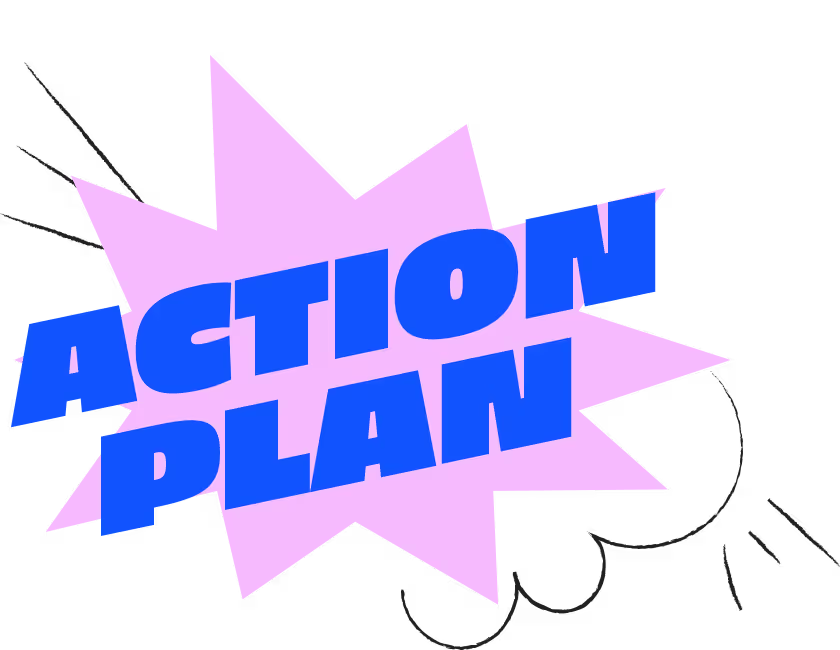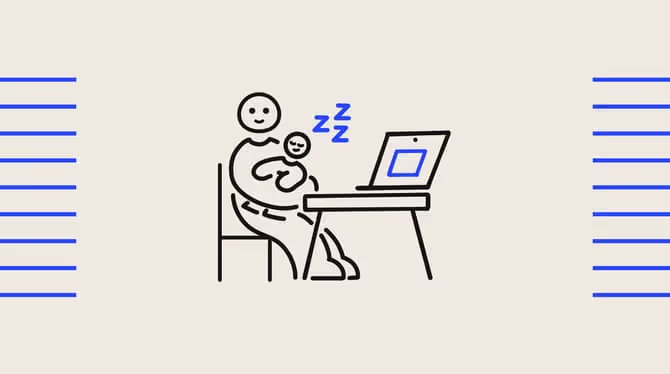Build accountability in the workplace of today: 4 strategies

Discover Workleap Officevibe's benchmark report on 12 key employee engagement metrics

Work looks a lot different than it did a year ago, and many teams have had to navigate change, big and small, in this time. From adjusting work methods, to adapting to shifts in business strategy, and striving to maintain work-life balance, managers have had their work cut out for them. Today, employee accountability in the workplace has become very important for team performance.
To create workplace accountability, managers must set clear expectations – and trust their team to deliver. With more remote work and distributed teams, that element of trust is especially crucial. Yet…
And employees tend to respond similarly to this question as they do to questions about how much they enjoy work, and whether they feel a sense of accomplishment. Set the tone for your team to get everyone feeling that sense of responsibility and motivation.
What is employee accountability in the workplace?
Employee accountability means meeting deadlines, hitting targets, and otherwise getting the job done. And accountable employees manage their workload according to team objectives, proactively seek help when they need it, and take responsibility when they make mistakes.
When teams have a culture of accountability, they prioritize their initiatives to align with business objectives and collaborate effectively together. On top of that, team members face failures together, without pointing fingers, and actively apply their learnings moving forward.
An accountable workforce is made up of driven employees and high-performing teams. You can see workplace accountability in action when people know what they need to accomplish and are empowered to get there independently. In an accountable company culture, mistakes and failures are acknowledged and embraced, contributing to a culture of learning and growth.
Accountable employees have a clear understanding of:
- Their role within their team
- The responsibilities they hold
- The expectations they have to meet
Accountable teams have a common understanding of
- How their work contributes to company goals
- The output they’re responsible for
- The targets they’re striving to achieve
How do you build employee accountability?
If you have underperforming employees, you might be tempted to check in more often and make sure they’re on the right track. But when employees don’t feel trusted or empowered to take charge of their own work, it impacts motivation, employee engagement, and morale. Yet…
When you clearly establish the job that needs to be accomplished, it gives employees the freedom to figure out how they get there on their own. With a little bit of coaching and a healthy amount of trust, you’ll quickly see a boost in personal accountability and ownership.
How to hold employees accountable:
- Meet with employees individually to clearly outline their roles and responsibilities. Use one on one meeting software to discuss the behaviours, tasks, skills, and output of their role.
- Once everyone’s roles are clear, set clear, measurable smart goals with your employees so they have something meaningful to work towards.
- Have regular, structured one-on-ones with employees to monitor their progress, give constructive feedback, and revisit their goals when needed.
- If you see someone’s productivity dropping, meet with them to discuss it. Approach them with curiosity and ask questions to open up the conversation.
4 strategies to build accountability in the workplace (with examples)
So, how do you build team accountability in the workplace of today? Use the following strategies to create alignment, commitment, and clarity, so everyone is responsible for their part.

1. Get team members familiar with each other’s goals
Once you’ve structured clear roles and responsibilities for each team member, make them accessible to the group. Even better, have your team share their individual goals with each other. The more visibility everyone has, the more your team can leverage their individual strengths and collaborate effectively.
{emphasize}
For example: Host a meeting where everyone can take turns presenting their role, their responsibilities, and how they see themselves developing. Have team members share their individual goals and how they connect with the team’s objectives.
{emphasize}
2. Involve employees in setting team goals
Have a meeting and present your team with the key results they’re accountable for meeting, and any constraints they have in terms of resources, personnel, timing, etc. From there, you can work together with employees to set goals that will help them hit their targets. This will help foster that sense of collective purpose, commitment, and responsibility that supercharges team performance.
{emphasize}
For example: You’ve been given an ambitious target to hit for the next quarter from your boss, and you’re nervous that this will make them feel like they’re set up for failure. First, meet with your team and present the end goal. Then, have a group brainstorm on different ways you can get there. Can you break it into monthly or bi-weekly targets? Or divide your team into sub-squads where each is accountable for a piece of the pie? Encourage them to see this as a challenge (the good kind).
{emphasize}
3. Have your team plan their own initiatives

In the same way that employees want the freedom to determine how they do their work, they also want a say in what they work on. But…
With clear goals and objectives (that they helped set), your team is empowered to determine the actions that will take them there together.
{emphasize}
For example: Say you’re managing a team of web developers, and you have a goal to increase traffic to your website in the next quarter. Meet with your team and discuss different paths that will get you there. Do they want to decrease the site’s loading time? Or collaborate with the design team to improve the user experience? Maybe render it more mobile-friendly? Assess each option based on effort vs. impact, and decide together which one(s) you’ll work on.
{emphasize}
4. Address issues with team engagement
Accountable teams have accountable leaders. Open up lines of communication so that you can keep a real-time pulse on how your employees feel. The better you understand your team’s engagement and pain points, the better you can spot where clarity or accountability is lacking. Turn these into talking points for the whole team, to hold employees accountable and get them involved in implementing solutions.
{emphasize}
For example: Using a software like Officevibe's engagement tool helps you understand your team’s needs and track trends in their engagement. Employees can share anonymous feedback, and you can respond directly in the app to turn it into a two-way conversation. Keep track of employee feedback, team engagement, and 1-on-1 meetings all in one place – any time, from anywhere. All of this helps you be there for your team, no matter how busy you are.
{emphasize}
Accountable employees form high-performing teams
Accountability and high performance go hand-in-hand, and your team relies on your leadership to help them get there. Support your team by setting them up with a clear destination for success, and the tools to forge their own path.
Give HR and managers the clarity, confidence, and connection to lead better every day.


%20(1).avif)


.avif)
.avif)






.png)
